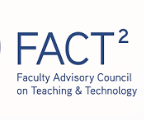Working Definition of ePortfolios:
An ePortfolio is the digitization of a portfolio process, using multimedia and web tools to collect, interrelate, demonstrate, reflect, give feedback and assess representations of users’ work.
- ePortfolios provide users with a personalized learning and/or professional space, while integrating academic processes and supportive systems together through a systematic approach.
- ePortfolios provide faculty, departments, and institutions with easy access to student work for course-, program-, and institutional-based assessments.
An ePortfolio system is the platform within which ePortfolios are developed, managed and assessed. Within an ePortfolio system, any user (i.e., individuals or groups of students, faculty or staff) can have multiple instances of an ePortfolio and link them together. The ePortfolio system allows users to manage all their ePortfolios and to assess any that are submitted for review.
For the purposes of this work, the following terms are used:
- ePortfolio – to mean a single instance,
- ePortfolios – to mean a user’s collection, and
- ePortfolios system – to mean the platform within which ePortfolios are developed, managed and assessed.
More Specifically, ePortfolios and ePortfolio systems can:
- Engage users with their own learning and reflection, providing a student-centered personalized learning environment.
- Provide an electronic environment where students can make links between their academic, professional, and personal lives and demonstrate accomplishments.
- Provide a presentation environment whereby anyone can conveniently present, store and reuse their ideas, reflections and materials, and archive their learning history to access through out their studies, after graduation, and for professional work. For students, the repository is not exclusive from their learning environment, but links to reflections and learning activities.
- Integrate learning expectations with assessment and effectiveness measures using rubrics and other assessment designs to match course, program and institutional outcomes to meet institutional, accreditation and other requirements.
- Provide ease of data collection for reporting purposes and preserve a record of student work that promotes the institution’s learning philosophy and demonstrates its value.
Examples of approaches to ePortfolios include:
- As a pedagogical approach, integrated into courses, ePortfolios offer a way of helping students develop 21st century educated person skills, such as: analytical thinking, reflection, digital literacy, and multi-modal skills as they progress through their studies. The use of ePortfolios would be incorporated into the teaching and learning processes and activities within a study.
- As an assessment approach, ePortfolios can be used to capture learner reflections, presentation of work, and the development and growth of learning over time.
- As a career presentation approach, ePortfolios can be a tool to help users collect their experiences and frame themselves for employment purposes.
- As an institutional and programmatic outcomes assessment approach – ePortfolios can be a tool to help faculty, programs and the college gather student work to analyze course, program and institutional outcomes. This could also be used to provide information to appropriate constituents to improve course, program and institutional effectiveness.
